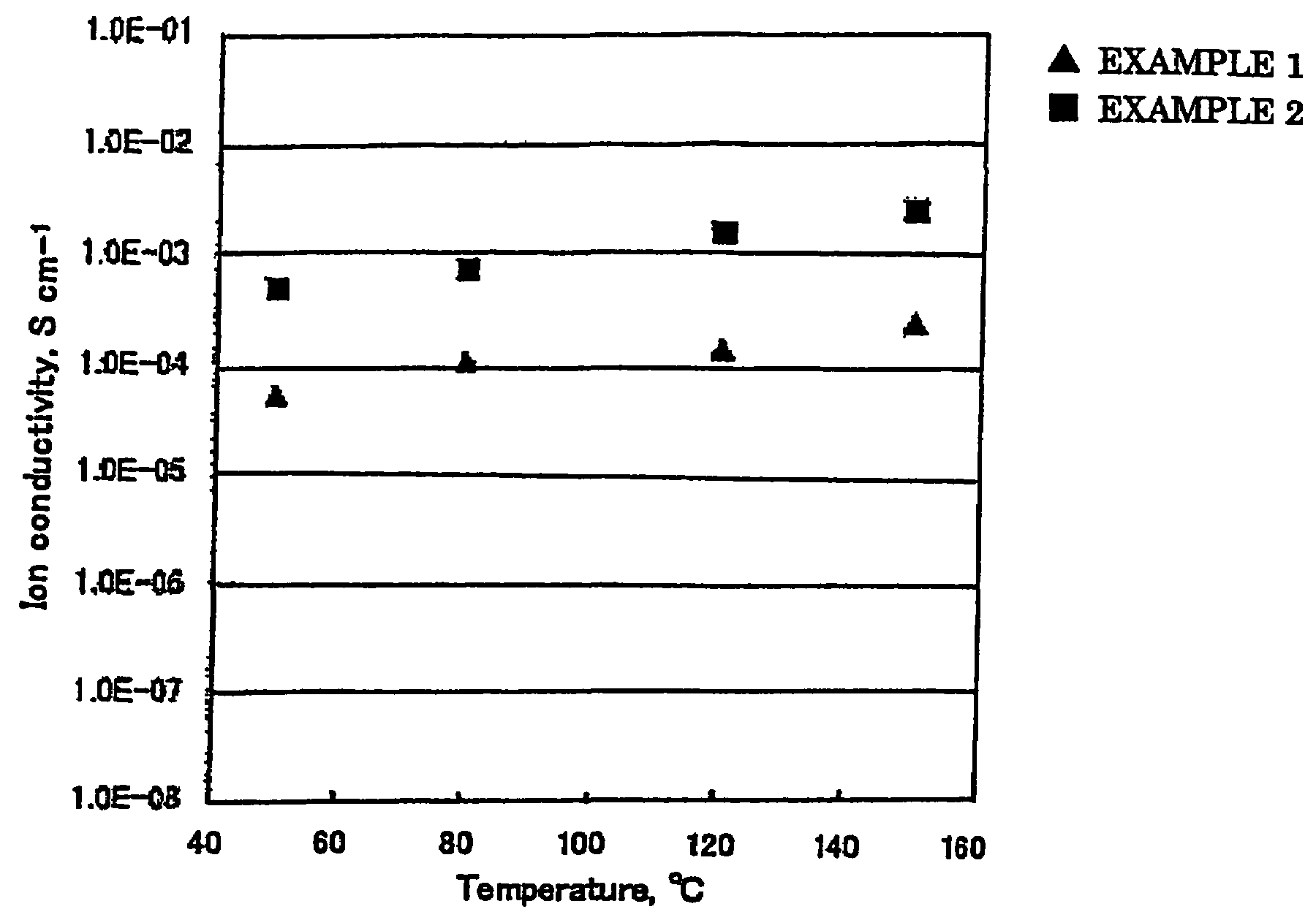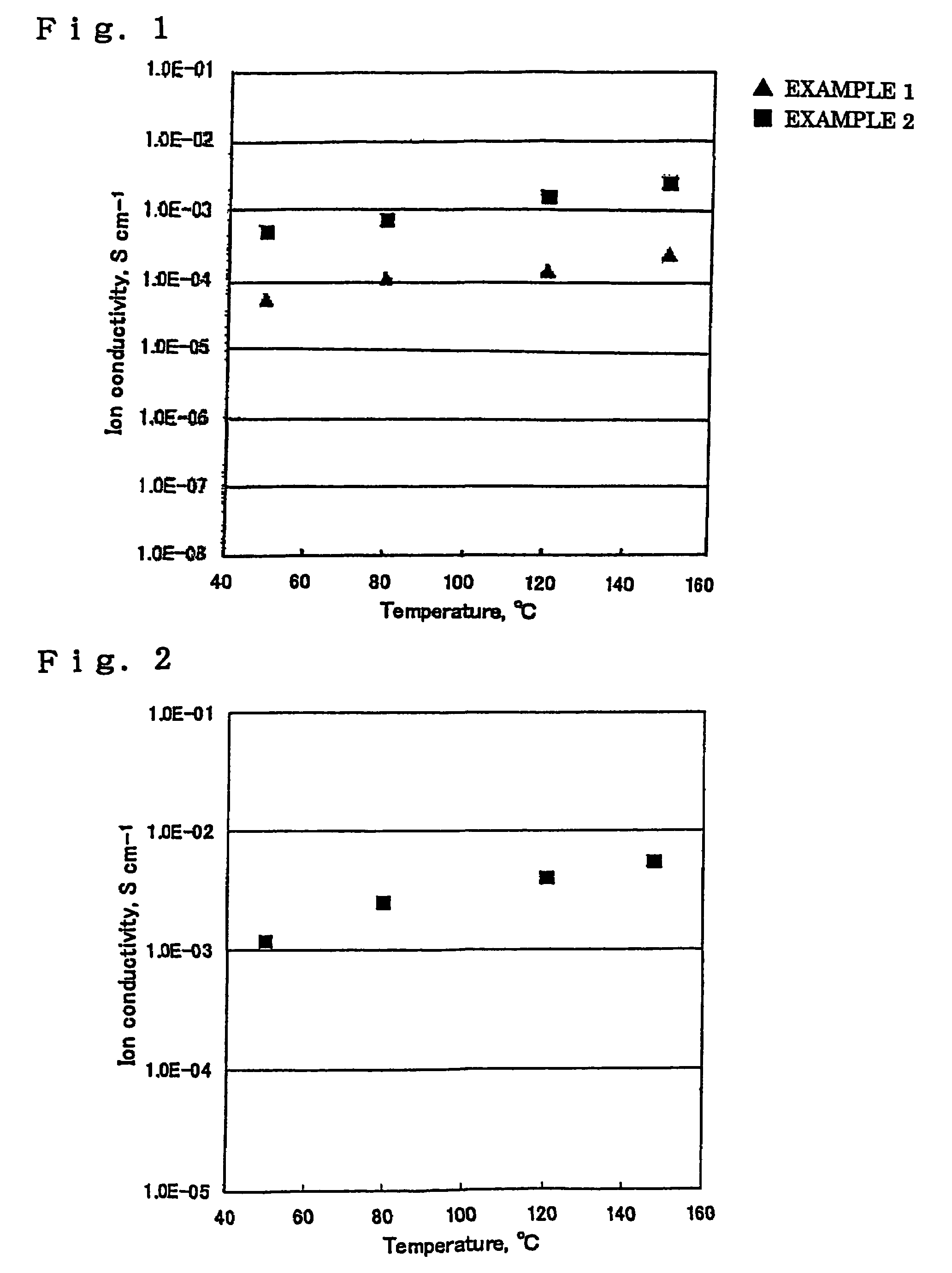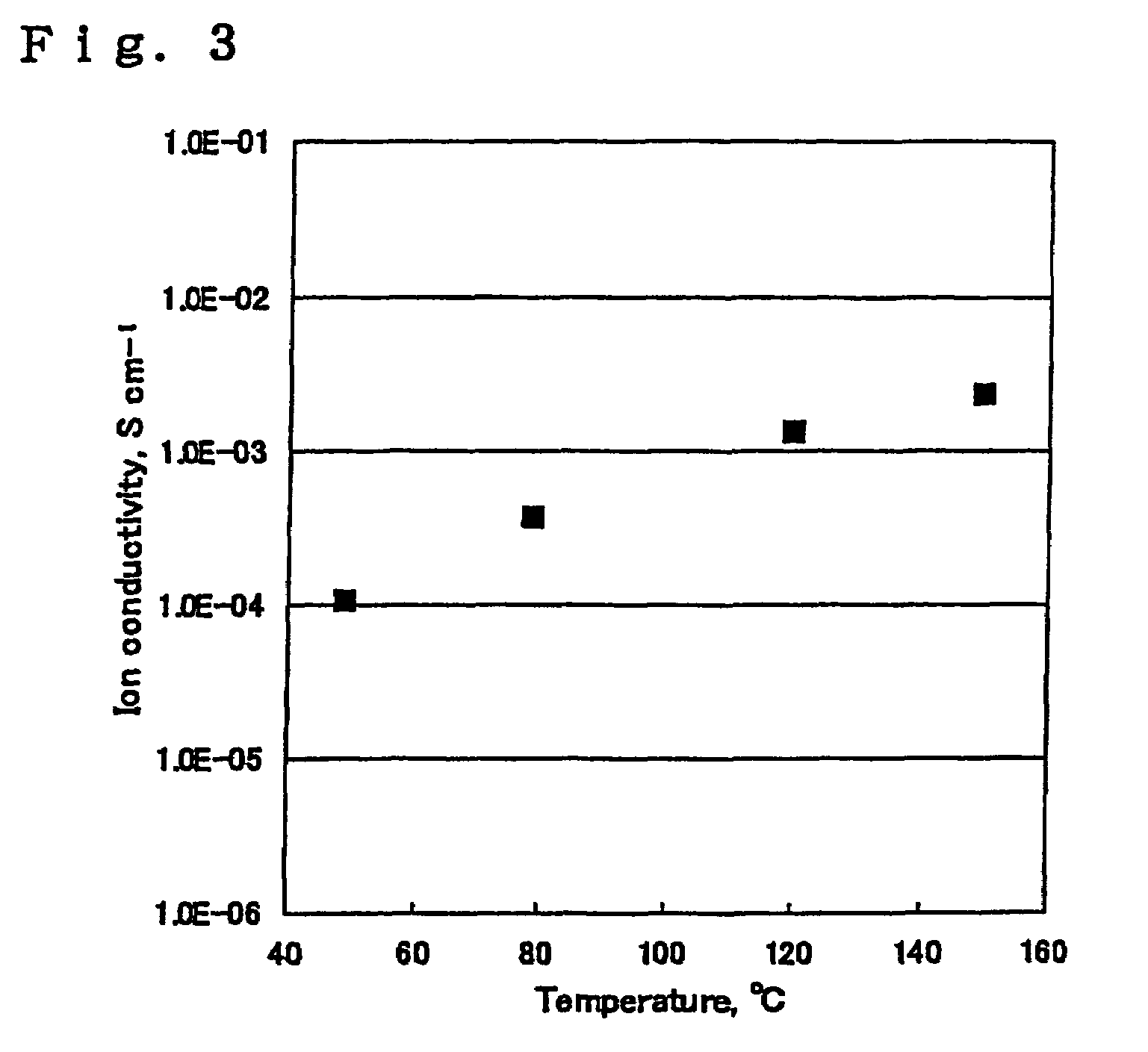Polyelectrolyte membrane and production method therefor
a technology of polyelectrolyte and production method, which is applied in the field of polymer electrolyte membrane, can solve the problems of poor durability characteristics including resistance to oxidation, volatile and flammable electrolyte solution, and difficult handling, and achieve excellent mechanical strength, maintain the effect of structure, and save energy
- Summary
- Abstract
- Description
- Claims
- Application Information
AI Technical Summary
Benefits of technology
Problems solved by technology
Method used
Image
Examples
synthesis example 1
[0103]In a four-necked separable flask equipped with a stirrer, a nitrogen inlet tube, and a gas outlet tube were put N,N-dimethylacetamide as a solvent and 4,4′-diaminodiphenyl ether as a diamine component. The mixture was stirred at 40° C. in a nitrogen atmosphere to make a solution. To the solution was added an equimolar amount, based on the diamine component, of 3,3′,4,4′-biphenyltetracarboxylic acid dianhydride in several divided portions. The mixture was allowed to react at 40° C. for about 12 hours while stirring to obtain a viscous polyamic acid solution having a solid content of 9.1 wt %. The resulting solution was cast on a mirror-finished SUS plate. A microporous polyolefin film (UP-3025, available from Ube Industries, Ltd.) was superposed on the polyamic acid solution cast film as a solvent exchange rate regulatory material. The laminated film structure was immersed in methanol and then in water to obtain a polyamic acid microporous membrane. The membrane was fixed on a ...
synthesis example 2
[0110]In a four-necked separable flask equipped with a stirrer, a nitrogen inlet tube, and a gas outlet tube were put N,N-dimethylacetamide as a solvent and, as diamine components, 4,4′-diaminodiphenyl ether and 3,3′-dihydroxy-4,4′-diaminobiphenyl at a molar ratio of 6 / 4. The mixture was stirred at 40° C. in a nitrogen atmosphere to make a solution. To the solution was added an equimolar amount, based on the total diamine component, of 3,3′,4,4′-biphenyltetracarboxylic acid dianhydride in several divided portions. The mixture was allowed to react at 40° C. for about 12 hours while stirring to obtain a viscous polyamic acid solution having a solid content of 9.0 wt %. The resulting solution was cast on a mirror-finished SUS plate. A microporous polyolefin film (UP-3025, available from Ube Industries, Ltd.) was superposed on the polyamic acid solution cast film as a solvent exchange rate regulatory material. The laminated film structure was immersed in methanol and then in water to ob...
synthesis example 3
[0117]To a solution of 16 g of N-ethylimidazole in 20 ml of ethanol was added dropwise 25 g of trifluoromethanesulfonic acid at 0° C. After returning to room temperature, the solution was stirred overnight and dried in vacuo at 60° C. for 16 hours to give N-ethylimidazolium trifluoromethanesulfonate (hereinafter referred to as EtIm+TfS−) as a colorless transparent liquid. The melting point of the resulting salt (literature value: 7.8° C.,) was measured by DSC analysis. As a result, endothermic peaks were observed at 6.3° C. and 21.0° C.
PUM
| Property | Measurement | Unit |
|---|---|---|
| glass transition temperature | aaaaa | aaaaa |
| melting point | aaaaa | aaaaa |
| pore size | aaaaa | aaaaa |
Abstract
Description
Claims
Application Information
 Login to View More
Login to View More - R&D
- Intellectual Property
- Life Sciences
- Materials
- Tech Scout
- Unparalleled Data Quality
- Higher Quality Content
- 60% Fewer Hallucinations
Browse by: Latest US Patents, China's latest patents, Technical Efficacy Thesaurus, Application Domain, Technology Topic, Popular Technical Reports.
© 2025 PatSnap. All rights reserved.Legal|Privacy policy|Modern Slavery Act Transparency Statement|Sitemap|About US| Contact US: help@patsnap.com



